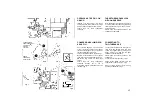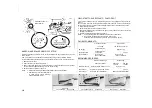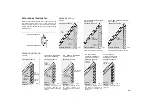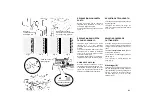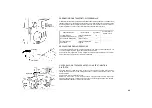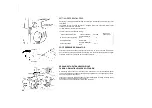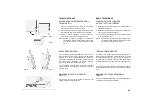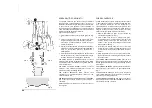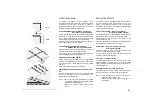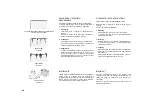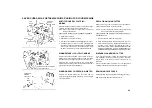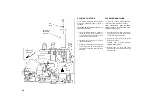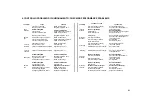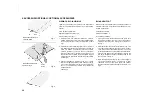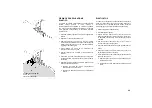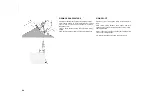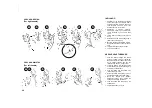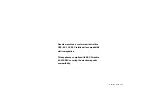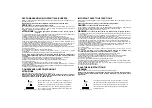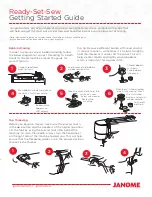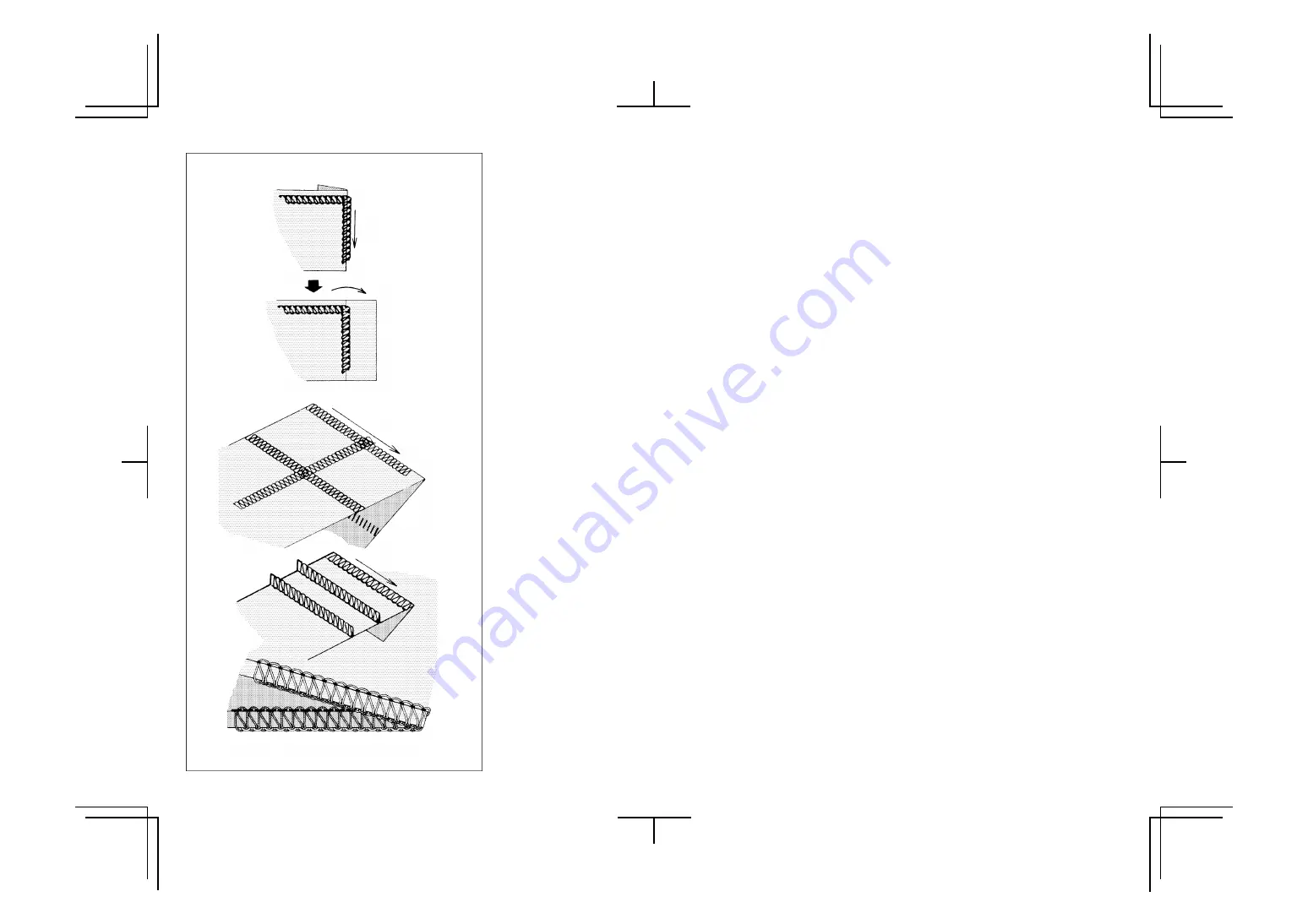
EFFETTI DECORATIVI
In aggiunta alla normale cucitura sopragitto che è
completamente descritta in questo libro d'istruzioni, la vostra
macchina può anche essere usata per un numero di
applicazioni decorative quali cuciture decorative superiori,
lunghezza di trecce decorative. Vedere sotto.
CUCITURE DECORATIVE SUPERIORI - usando solo 2
fili o usando 3 fili (cucitura piatta)
Piegare la stoffa lungo la linea dove si desidera realizzare la
decorazione e cucire sopra il bordo piegato assicurandosi
di non tagliare nella piegatura. Fig. A. Svolgere la stoffa,
tirare le estremità dei fili sul rovescio e pressare liscio.
L'aspetto finale può essere esaltato usando filo ritorto per
asole o filo da ricamo sul gancio inferiore.
CUCITURE BORDI - USANDO SOLO DUE FILI
O USANDO TRE FILI (CUCITURA PIATTA)
Porre due pezze di stoffa al rovescio insieme ed eseguire il
sopragitto lungo il bordo. Rovesciare e pressare.
Usando stoffe e fili di colore differente si può ottenere un
piacevole effetto di pezzi diversi. (patchwork).
PIEGHETTATURA USANDO TRE FILI
Piegare il tessuto lungo una linea che si vuole pieghettare e
eseguire il sopragitto lungo il bordo piegato, assicurandosi
di non tagliare entro il bordo piegato del tessuto. (vedere
pag. 29).
Tirare le estremità dei fili al di sotto e pressare.
ESECUZIONE TRECCE DECORATIVE - USANDO I TRE
FILI
Eseguire il sopragitto sopra un cordone o treccia tenendolo
con cura con entrambe le mani, assicurandosi di non
tagliare il bordo (vedere pag. 29).
NOTA : *Se cucirete i sopra menzionati punti con il piedino
orlo invisibile (opzionale, pag. 32) potrete ottenere
facilmente un cucitura ottimale.
**Riducete le tensioni quando usate un filato
grosso.
DECORATIVE EFFECTS
In addition to normal overlocking which is fully described in
this instruction book, your machine can also be used for a
number of decorative applications such as decorative
top-stitching, butted seams, pin-tucking or making lengths
of decorative braid. See below.
Decorative top-stitching – using only two threads
or using three threads (flat seam)
Fold fabric along the line to be top-stitched and sew over the
folded edge, making sure not to cut into the fold. Fig. A.
Unfold the fabric, pull the ends of the threads to the
underside and press flat.
The final appearance can be enhanced by using buttonhole
twist or embroidery thread on the lower looper.
Butted seams – using only two threads or using
three threads (flat seam)
Place two pieces of fabric wrong sides together and
overlock along the edge. Unfold and press.
By using different coloured fabrics and thread a pleasing
' patchwork ' effect can be achieved.
Pin-tucking – using three threads
Fold fabric along a line to be pin-tucked and overlock sew
along the folded edge, making sure not to cut into the folded
edge of the fabric. (See page 29). Pull ends of threads to the
underside and press.
Making decorative braid – using three threads
Overlock over a cord or braid, holding it carefully with both
hands, making sure not to cut the edge. (See page 29).
NOTE : * If you use blind hem foot (option, see page 32),
decorative stitch is made easily.
**Reduce the upper looper tension when you use
thick thread.
27
Fig. B
Fig. A
Summary of Contents for Lock 181
Page 1: ......





